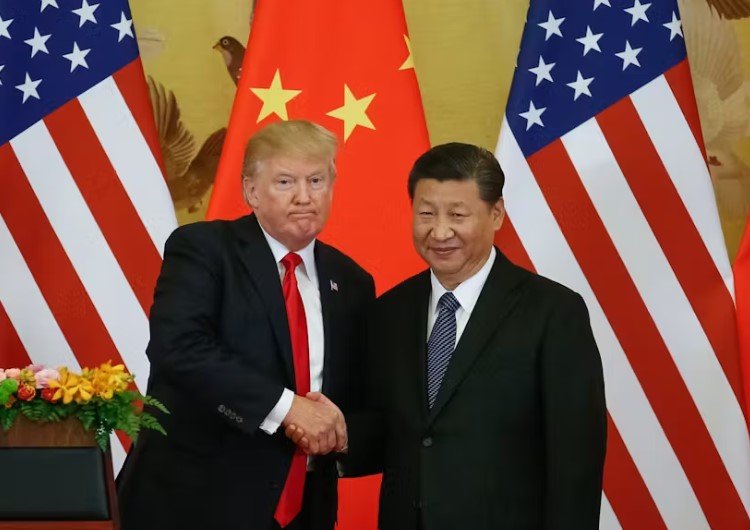As tensions rise over a shattered 90-day trade truce, the US and China are heading for another standoff — and this time, the tech sector’s right in the crosshairs.
A deal made in May was supposed to be a cooling-off period. That didn’t last long. Less than a month in, both sides are pointing fingers, accusing each other of bad faith. Washington says Beijing broke the rules. Beijing says the same about Washington. Meanwhile, what’s quietly unraveling is a fragile ecosystem of tech partnerships that took years to build.
From Truce to Turmoil in Just 30 Days
It didn’t take much. Just one comment from former US President Donald Trump — claiming China had “totally violated” the May trade truce — and the diplomatic glass cracked.
The Chinese Commerce Ministry wasted no time firing back. On June 2, it accused the US of introducing “discriminatory and restrictive measures,” calling them a direct hit on the agreement’s foundations. While Beijing insists it played by the rules, Washington seems ready to throw them out altogether.
This wasn’t just political theater. It’s already having real-world consequences.
Huawei in the Crosshairs Again
The US Department of Commerce’s Bureau of Industry and Security (BIS) made its move quickly. Huawei — again — found itself at the center of controversy.
This time, the focus is AI chips. Washington says any use of Huawei’s Ascend chips, anywhere in the world, violates US export controls. That includes chips designed using American software or tools — even if the final product was made in China or another country.
That’s a big deal for countries and companies who thought they’d sidestepped earlier sanctions by working with third parties. Now, even those detours could land them in hot water.

Tech Cold War Isn’t Just a Buzzword Anymore
This isn’t just about Huawei. It’s bigger than one company.
The rift between Washington and Beijing has grown deeper, and tech is where the fallout hits hardest. AI, chips, cloud computing, 5G — these aren’t just buzzwords. They’re the backbone of modern economies. And with both sides tightening rules and playing hardball, collaboration is getting harder by the day.
What used to be joint ventures are now turning into tangled messes of compliance checks and legal grey zones. American firms are growing cautious about Chinese ties. Chinese firms? They’re scrambling for workarounds.
And here’s where things get trickier — China’s made it clear it won’t be the only one making adjustments.
Global Players Caught in the Crossfire
If you’re a tech firm in Europe, India, or Southeast Asia — good luck staying neutral.
Export control laws don’t just apply at home. If a chip was made using US software, even indirectly, it’s now subject to American regulations. That means:
-
A Dutch firm using US tech can’t sell chips to a Chinese buyer without clearance
-
An Indian company building cloud systems can’t include certain Huawei components without risking US scrutiny
It’s like a global game of regulatory dominoes. And no one’s sure where the last tile falls.
Who’s Most Exposed?
Some companies are more vulnerable than others. Here’s a snapshot:
| Company/Region | Exposure Risk | Key Dependencies |
|---|---|---|
| Huawei | Very High | US tech tools, global buyers |
| Apple | High | China-based manufacturing |
| ASML (Netherlands) | Medium | US software in chip machines |
| Infosys (India) | Low-Medium | Cloud tools, consulting |
| Samsung (South Korea) | Medium | Cross-border chip exports |
So, what’s the common thread? Dependencies. Decoupling may be the goal, but the global supply chain says otherwise.
The Cost of Cutting Ties
Breaking tech ties isn’t cheap. It’s not easy either.
Years of collaboration can’t be undone overnight. American AI models often train on Chinese datasets. Chinese chips rely on American software. Data centers, cloud platforms, quantum labs — they’re all intertwined.
That doesn’t mean decoupling isn’t happening. It is. Just slowly and painfully.
Governments are pouring billions into local chip fabs and domestic alternatives. But building up those capabilities will take years. And during that time? Expect a lot of stopgap solutions, delays, and awkward partnerships.
Some firms are choosing to “geofence” operations. That means splitting products — one version for the West, another for China. It’s clunky and expensive, but it keeps legal teams happy.
Others are quietly lobbying both governments to ease off. So far, no luck.
EU Watches Nervously from the Sidelines
Europe’s not in the fight — but it’s definitely watching.
The EU recently admitted that it’s nowhere close to ending its reliance on US Big Tech. And now, with tensions flaring between the US and China, the bloc faces a tough choice: align fully with Washington, or try to stay in the middle and risk alienating both.
Either way, Brussels knows the score. There’s no digital sovereignty without a steady pipeline of chips, cloud infrastructure, and AI tools — many of which still run through the US or China.
So for now, Europe is pushing for “open strategic autonomy.” That’s diplomatic speak for: “Please don’t cut us off.”








